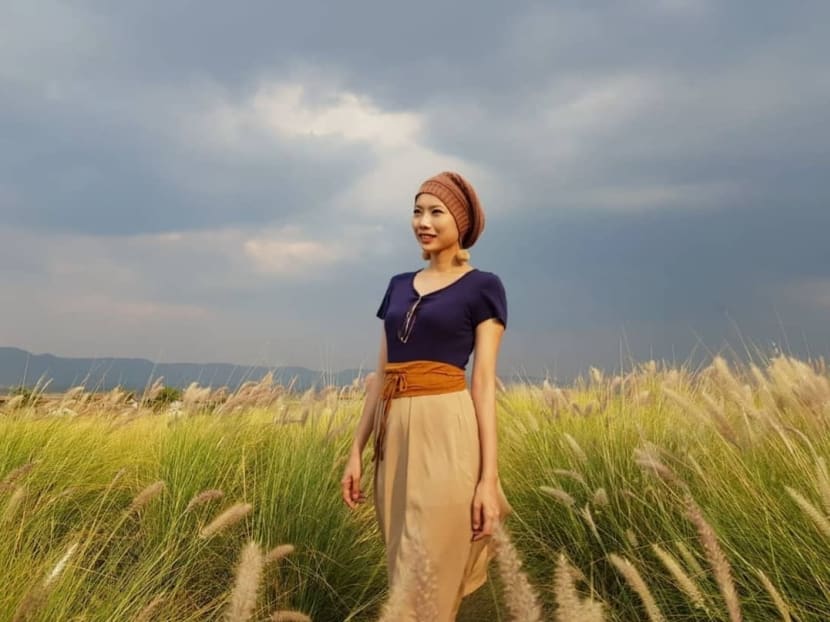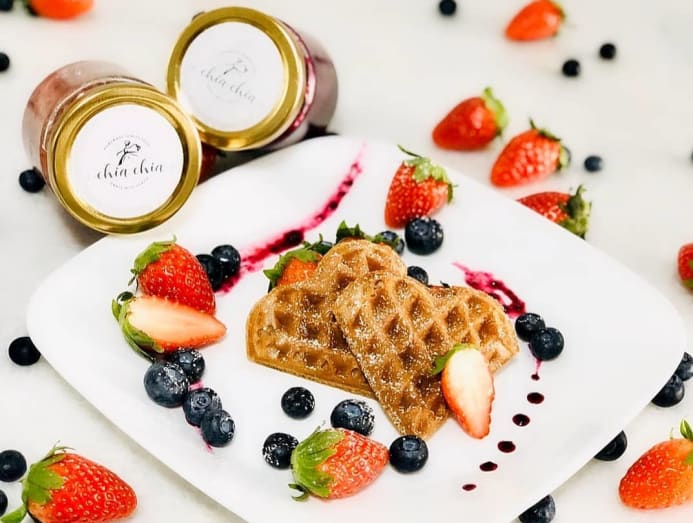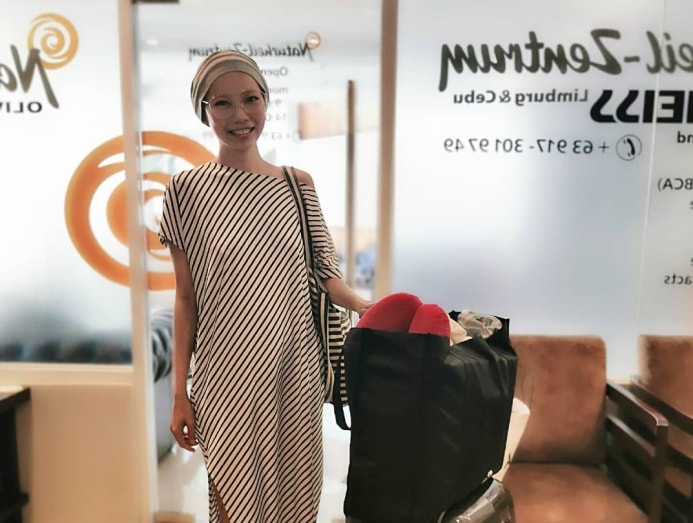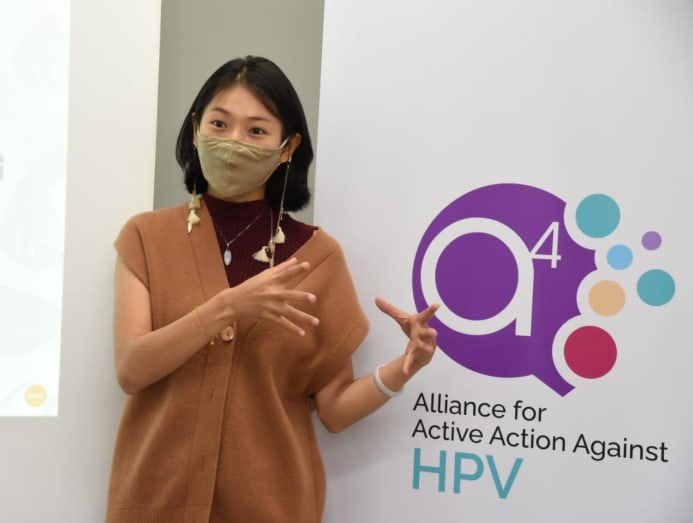‘My dream is to be a mother’: A 29-year-old shares her five-year battle with cervical cancer
After two relapses, multiple surgeries, and more than six cycles of chemotherapy, Summer Ng, now 29, has found new purpose as an advocate for cervical cancer awareness. As told to CNA Women's Sharon Salim.

Summer Ng is one of the ambassadors for the Alliance for Active Action Against HPV (A4HPV) movement in Singapore. (Photo: Summer Ng)
It was in early 2016 that I noticed unusual bleeding after intercourse. I thought it was due to my irregular menstruation, so I didn’t think much about it. Over the next few months, the bleeding came on and off, and in August that year, I decided to see a doctor for a check-up.
I was diagnosed with stage one cervical cancer. I was 24 then – and the youngest cervical cancer patient in the hospital.
My dream is to be a mother and I’ve always wanted to have my own kids. I was devastated, and I asked myself: “Why did this happen to me?”
At first, I wasn’t very affected. What I wanted to know at that point was the treatment and plans moving forward.
ADVISED TO REMOVE HER WOMB
However, when the doctor recommended surgery to remove my womb, that’s when I really felt the impact of the diagnosis.
My dream is to be a mother and I’ve always wanted to have my own kids. I was devastated, and I asked myself: “Why did this happen to me?”
As my doctor didn’t offer any other treatments, I did more research on cervical cancer – and found that an alternative was to remove the cervix. I asked my doctor if I could do that instead.

He said it could be done, but while that would save my womb and give me a chance at having children of my own in future, it would also increase my risk of relapse. It would also mean I had a higher chance of miscarriage in pregnancy.
I went ahead with my decision to remove my cervix. After the surgery, my doctor then recommended radiotherapy to eradicate the remaining cancer cells. But because the treatment might also affect my fertility, I decided against it.
THE FIRST RELAPSE: ‘I TOOK MY RECOVERY FOR GRANTED’
Almost immediately after the surgery, I went back to being the workaholic that I am. I took my recovery for granted and I didn’t take care of myself.
I was supposed to be resting and not subjecting myself to too much stress, but the company I was working for had just opened its Singapore branch, so I worked overtime a lot and spent many late nights in the office.
During one of my check-ups in 2017, about 10 months post-op, the doctor saw something unusual in my abdomen via a body scan.
It seemed that I had had a relapse, although they couldn’t confirm if the tumour was cancerous – the doctors would have remove it first, then send a sample to the lab for testing.
I asked a lot of questions about whether I could get pregnant in future, so my doctors offered me the option of ovarian tissue freezing.
As the tumour was located near one of my ovaries, this procedure would preserve the other (unaffected) ovary, which would be essential for future pregnancies. I would then have the option to return the ovarian issue to my body in the future.
I asked a lot of questions about whether I could still get pregnant in future so my doctors offered me the option of ovarian tissue freezing.
I had to undergo three cycles of chemotherapy to decrease the size of tumour, followed by a Caesarean section to remove it and the ovarian tissue for freezing. And after that, another three cycles of chemotherapy. This was in November 2017.
The biopsy came back negative – the tumour was not cancerous. Despite this, my doctors decided it would be prudent to go ahead with chemotherapy because of my earlier cervical cancer diagnosis.
The treatment took about five months. During the 18 weeks of chemotherapy, I started losing my hair and felt more tired than usual.
THE SECOND RELAPSE: ‘MY LIFE WOULD BE IN DANGER’
About 10 months later, a subsequent check-up found another tumour in my abdomen.
I psyched myself to go through another two rounds of chemotherapy, for the second time. But midway, my doctor told me that the treatment were creating a hole in my intestine. If it grew any bigger, he said, faeces would come out of it into my body, and my life would be in danger. He recommended that we stop chemotherapy.

He also wanted to do stoma surgery (an opening in the abdomen that allows waste to exit the body into an external bag) to protect my colon from the effects of chemotherapy. But I refused as I couldn’t accept the idea.
I consulted another doctor for a second opinion, who said I could continue with chemo. At that point, I just felt tired and lost. Should I take a risk and continue with chemo?
I decided to embark on a self-healing journey to give myself space to get away from it all – and rest. In April 2019, I left Singapore for the UK.
My plan was to spend six months there, living with friends and strangers, as part of a platform called Workaway that allows you to work for them in exchange for free accommodation. I lived with a mother and her daughters, helping to clean the house and take care of the children.
However, four months into my stay, I realised the environment was not conducive for my healing. I was also in pain as I could feel the tumour growing bigger by the day.
In my fifth month, I couldn't take the pain anymore and flew back to Singapore in September 2019 for treatment.
“I WAS IN CRITICAL CONDITION”
When I returned to Singapore, I was in critical condition. The tumour had not only doubled to the size of an orange, the doctor said it was already corroding into my colon – leaving me with no choice but to go ahead with stoma surgery to “save” it.
After the stoma surgery in October, I had to live with a stoma bag (a pouch to collect stools) for six months. It was very uncomfortable: I developed rashes from the stickiness of the bag, and I needed to clear and clean it regularly. It was horrible at the start, but I got used to it after a month.

The tumour itself was close to the nerves, and surrounded by blood vessels, making it impossible for surgery to remove it, unless it first decreased in size. So I started on chemotherapy to reduce the tumour.
During this time, my friend recommended a wellness centre in Cebu, Philippines, whose approach was to boost the immune system to help the body defend itself. As further chemo was unlikely to reduce the tumour even more, I decided to try it.
To raise some funds for the treatment in January 2020, I made chia seeds jam to sell. Within 13 days, I sold about 300 jars and raised approximately S$2,000. I was appreciative that many people supported it.

During the two weeks I was in Cebu, I’d go for one to two-hour treatments every day, which focused on boosting my immune system, including ozone therapy, which is said to be an alternative method to treating diseases.
I then returned to Singapore for surgery to remove the tumour.

All in all, this second relapse took much longer to recover from, having to go through three surgeries – the colostomy to open the stoma, another surgery to remove the tumour and another stoma surgery after that to put back the stoma and stitch it up.
FORGIVENESS AND SELF-ACCEPTANCE
There are many misconceptions about cervical cancer, especially in Asian countries, where everyone thinks that it’s a “woman’s problem”. Some people just focus on the word “intercourse” and think that it’s related to promiscuity or those who’ve had a few sexual partners.
But when I found out more, I realised that’s not the case. And it made me want to address these misconceptions.
Throughout the ordeal, the hardest part for me was finding out the cause. I never knew there was a preventative vaccine for cervical cancer. We didn’t talk about it much in school or at home. So when I finally found out about it, it was a bit too late for me.
The surgical scars affected me for awhile – including a thick, vertical one just below my belly button, but now I’ve become used to it.
I also did a lot of self-discovery work along the way, such as how to understand, love and respect myself. I tend to please the people around me – I’ve been living for others almost half of my life. There’s a lack of self-love and a lot of suppressed anger.
As years passed by, I believe this anger was “eating” into my body, and this was my body telling me to: “I’ve had enough.”
The surgical scars affected me for awhile – including a thick, vertical one just below my belly button, but now I’ve become used to it.
I like to go to an onsen, and wear a bikini sometimes, so sometimes people will stare, but I don’t care – it’s become a scar of victory for me.
A RENEWED MINDSET AND SENSE OF PURPOSE
It’s been slightly more than a year since I started my own health and wellness business called Summer Origin. My products, such as soups and tea, aim to keep your body “warm”, a traditional Chinese medicine concept; I understand that cancer cells live in an environment that is very “cold”.
Meanwhile, the service side of my business is about mental wellness and helping others to overcome their challenges and find their purpose in life.
There are many misconceptions about cervical cancer, especially in Asian countries, where everyone thinks that it’s a “woman’s problem”.
When I meet new people and friends, whether it’s about my life or business, it’s become natural for me to share my story and knowledge about cervical cancer. And I think that’s my purpose.
I am one of the ambassadors for the Alliance for Active Action Against HPV (A4HPV) in Singapore. I speak at events and seminars, including insurance companies and health forums, to help break the stigma of human papillomavirus (HPV) and cervical cancer.

Personally, I’m also more open to the idea of adoption now. I can be a mother to any child and I don’t have to insist on having my own children.
I also think it’s important that my future partner gets the cervical cancer HPV vaccine as a preventative measure for both himself and me. It’s a form of self-love and mutual respect for both parties.
Personally, I’m also more open to the idea of adoption now. I can be a mother to any child and I don’t have to insist on having my own children.
I am turning 30 in March, and it’s been two years since the last cervical cancer diagnosis. In the past, I used to be really worried about having a relapse, so much so that when people ask me “Have you recovered?”, my answer would be that I’ve recovered for now – but I’m not sure when it’ll come back again.
But today, my mindset has shifted, and I can say confidently now, that yes, I am okay. With this change of mindset, I think I am no longer scared of my quarterly check-ups anymore.
CNA Women is a section on CNA Lifestyle that seeks to inform, empower and inspire the modern woman. If you have women-related news, issues and ideas to share with us, email CNAWomen [at] mediacorp.com.sg.












